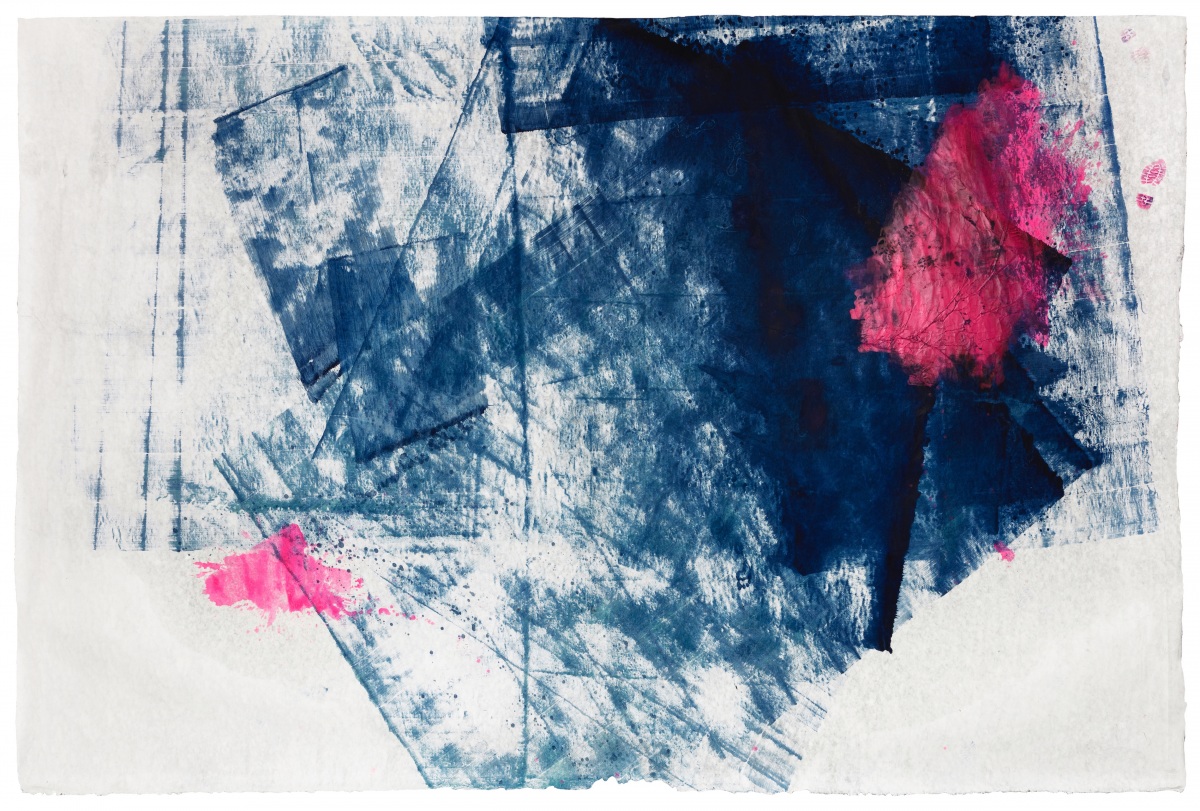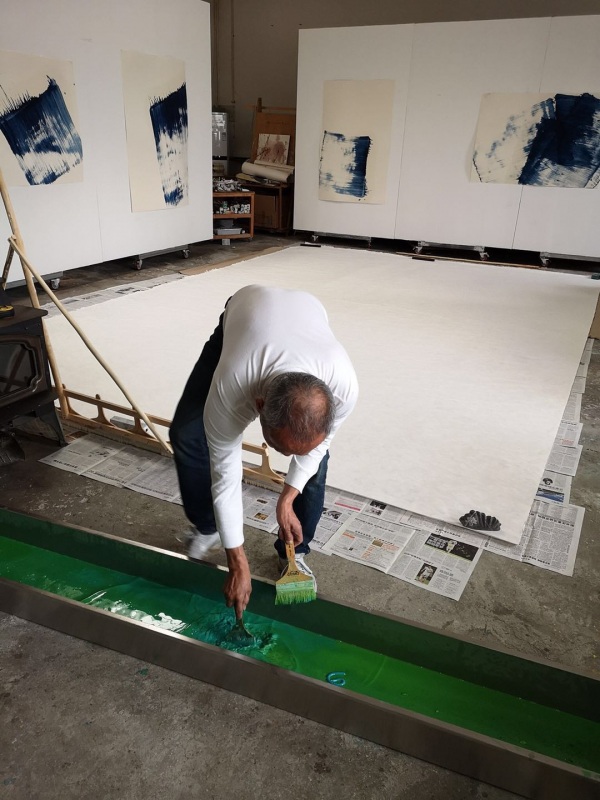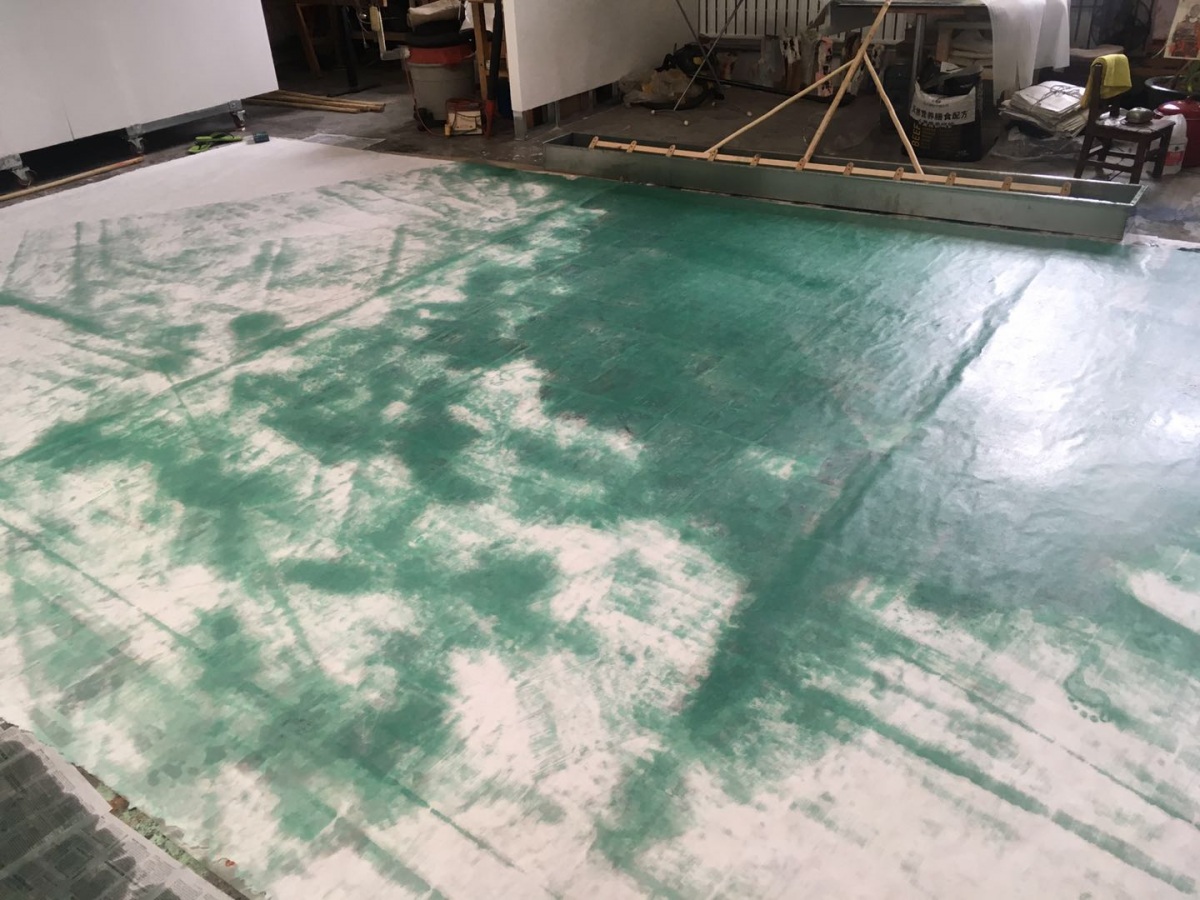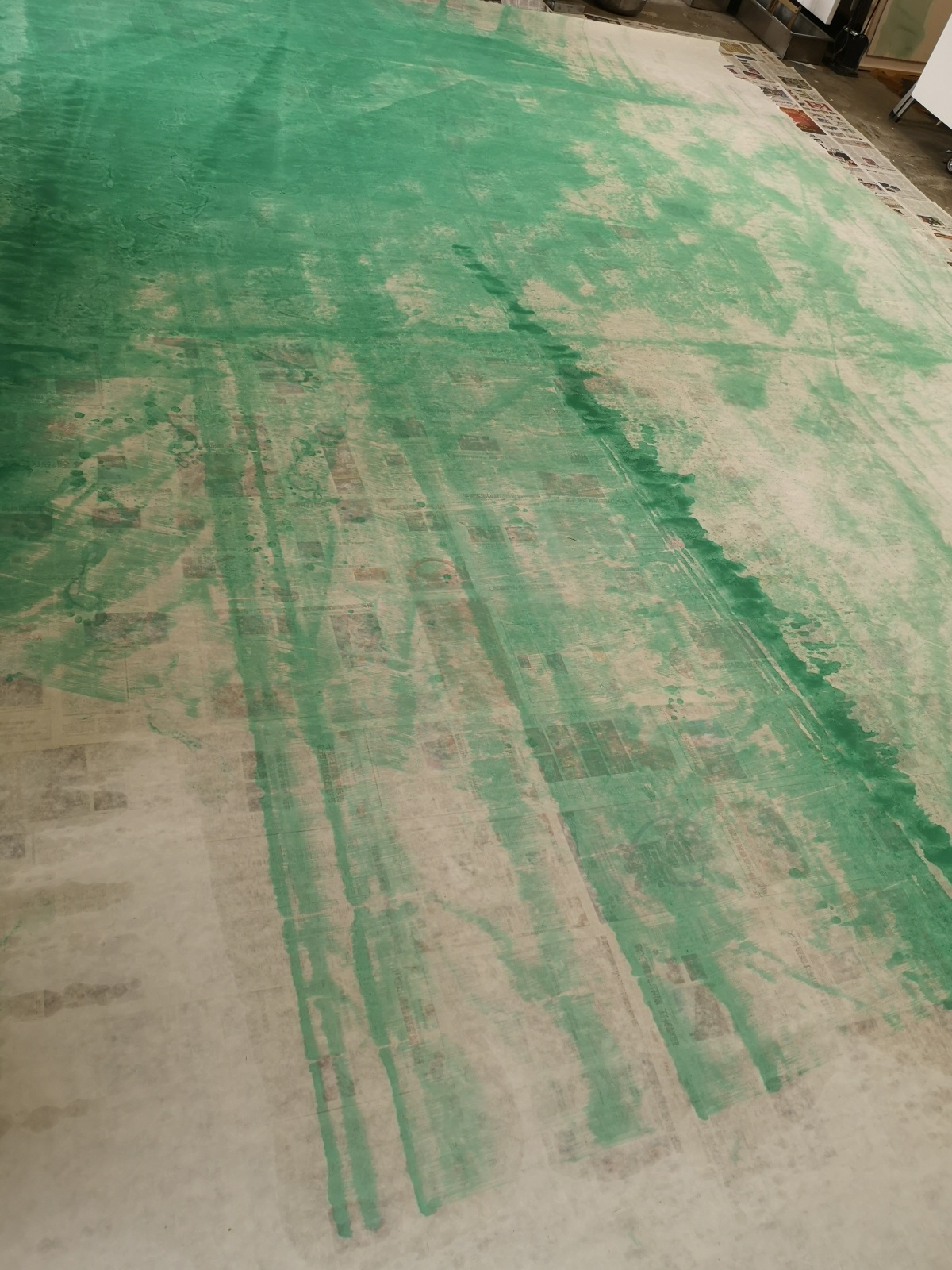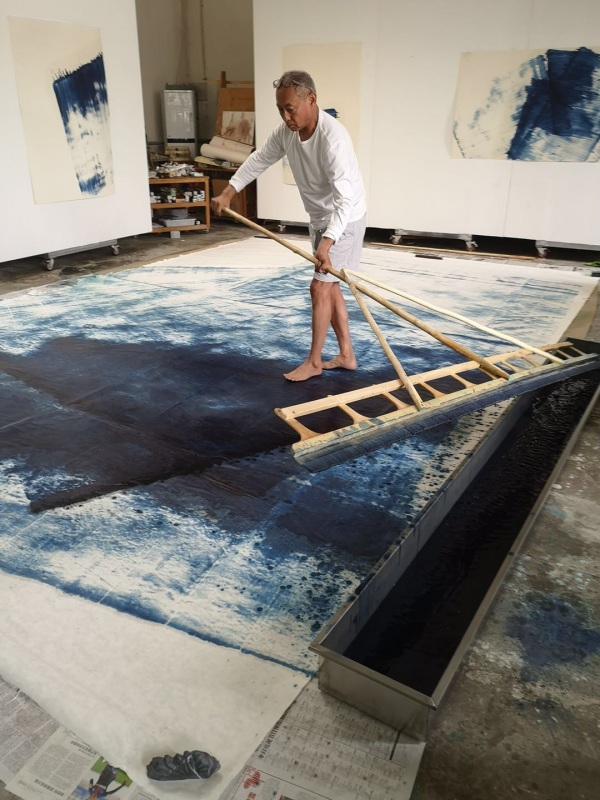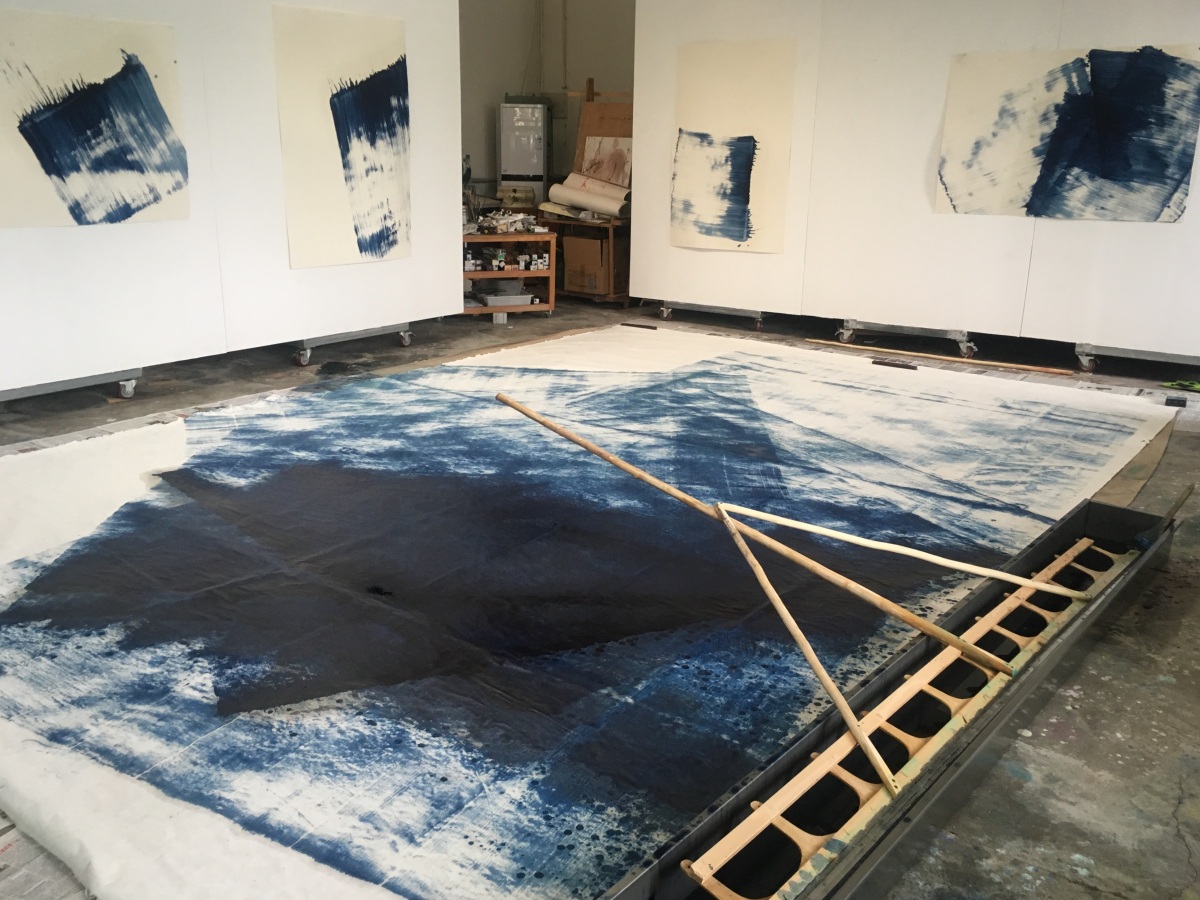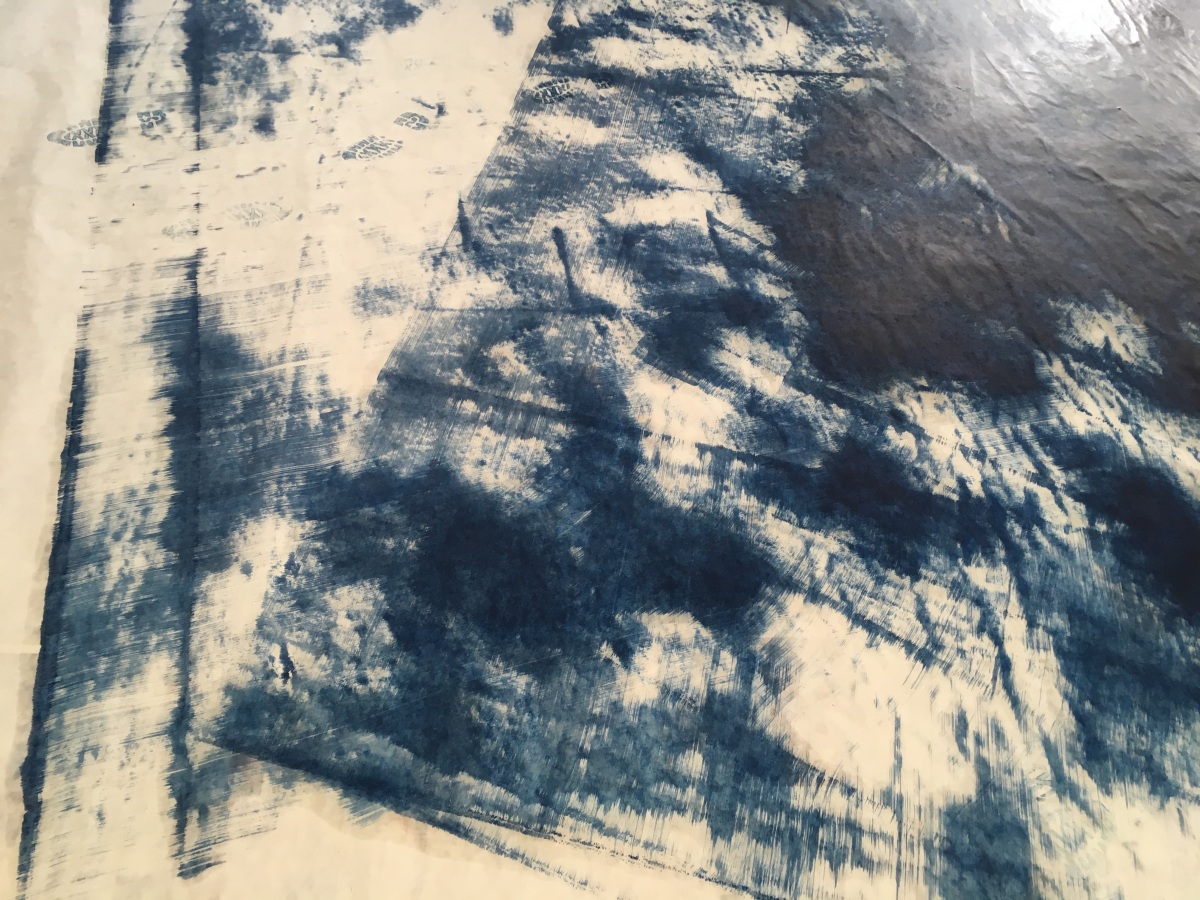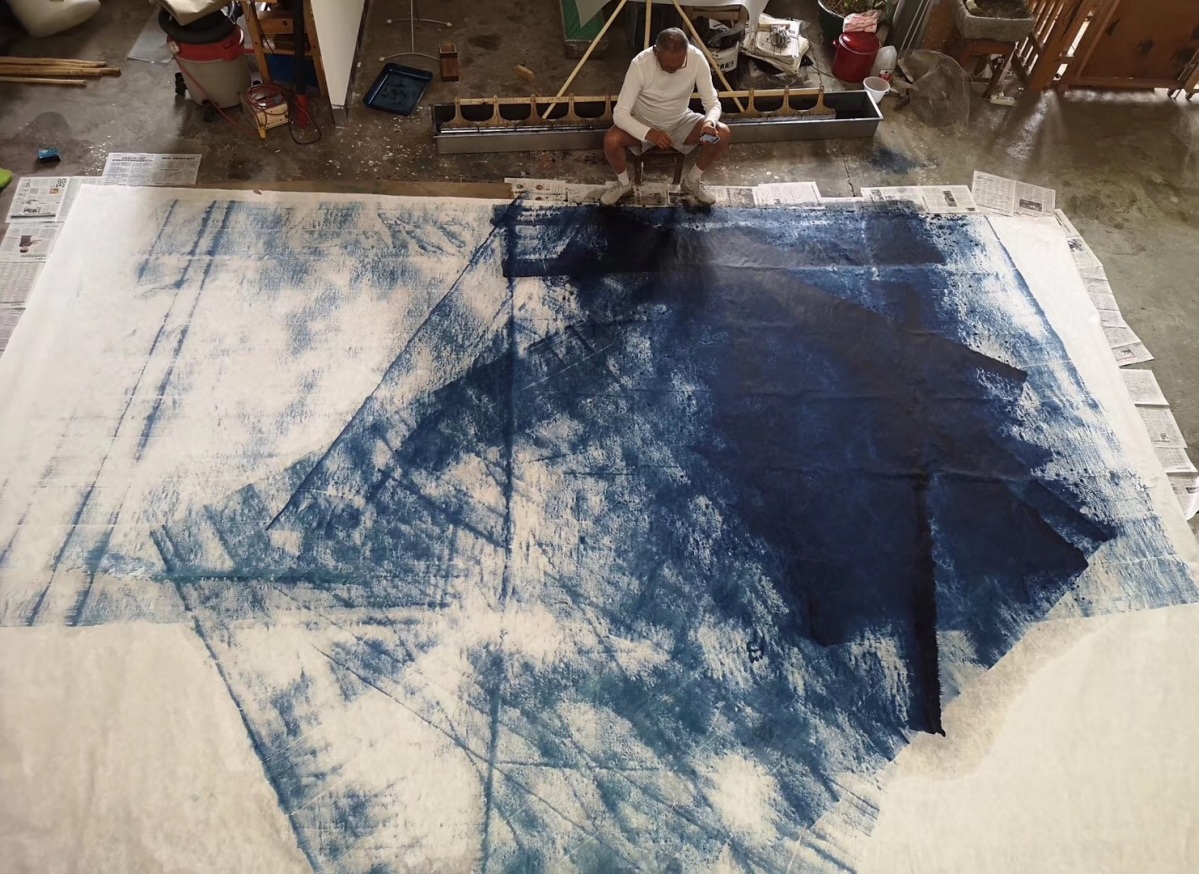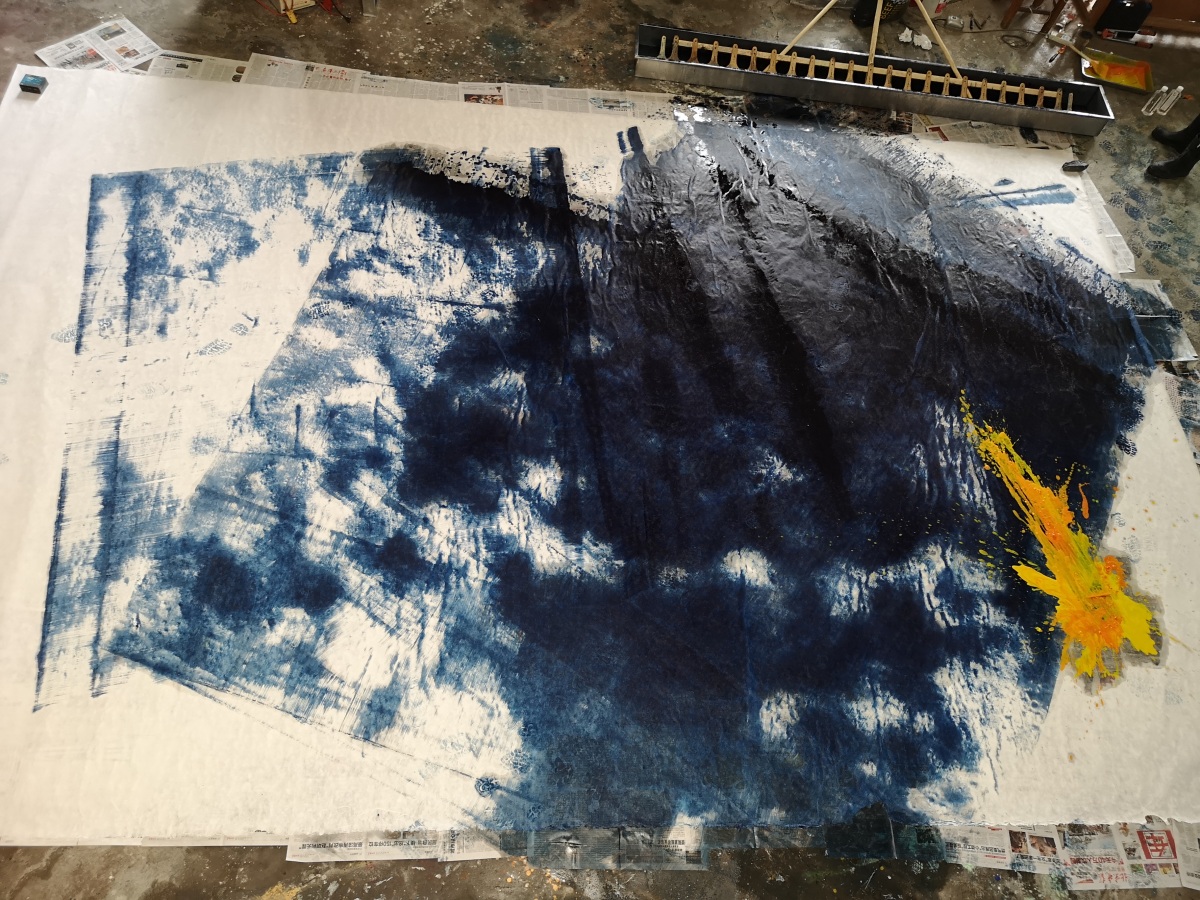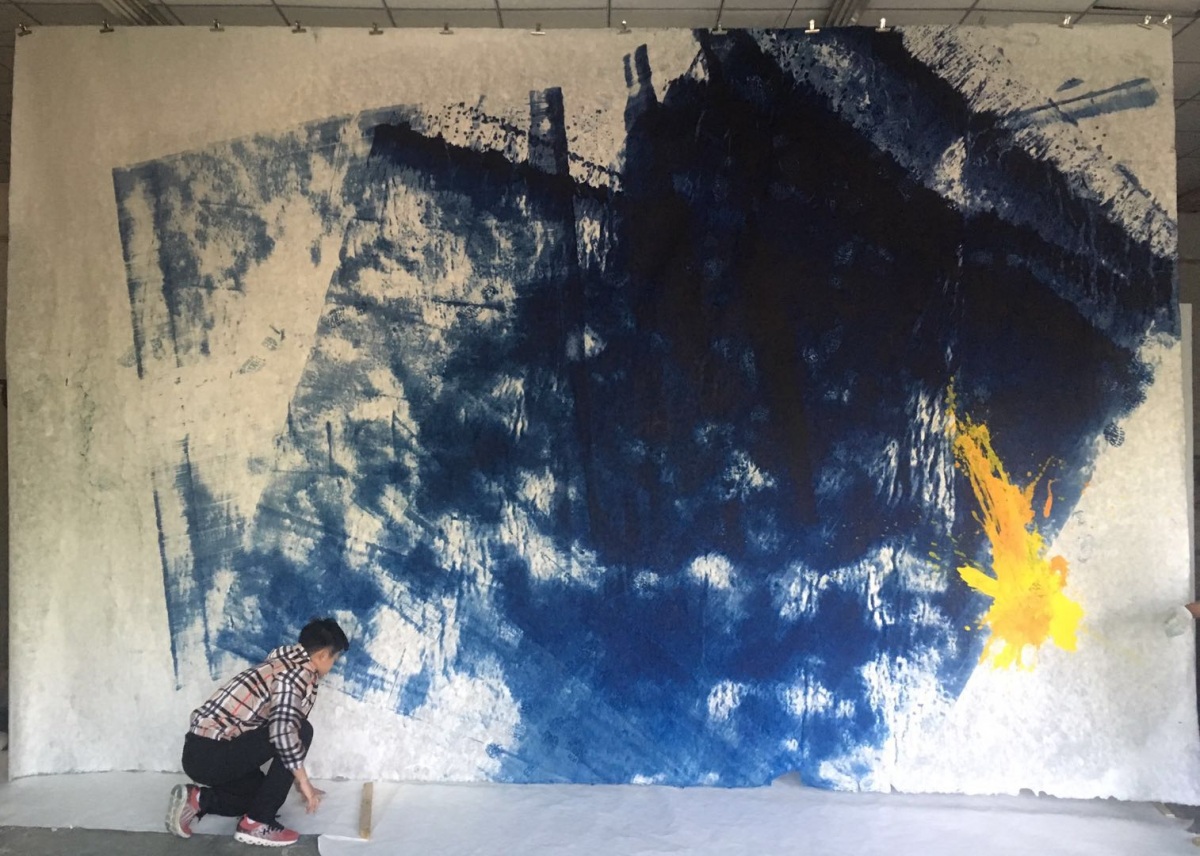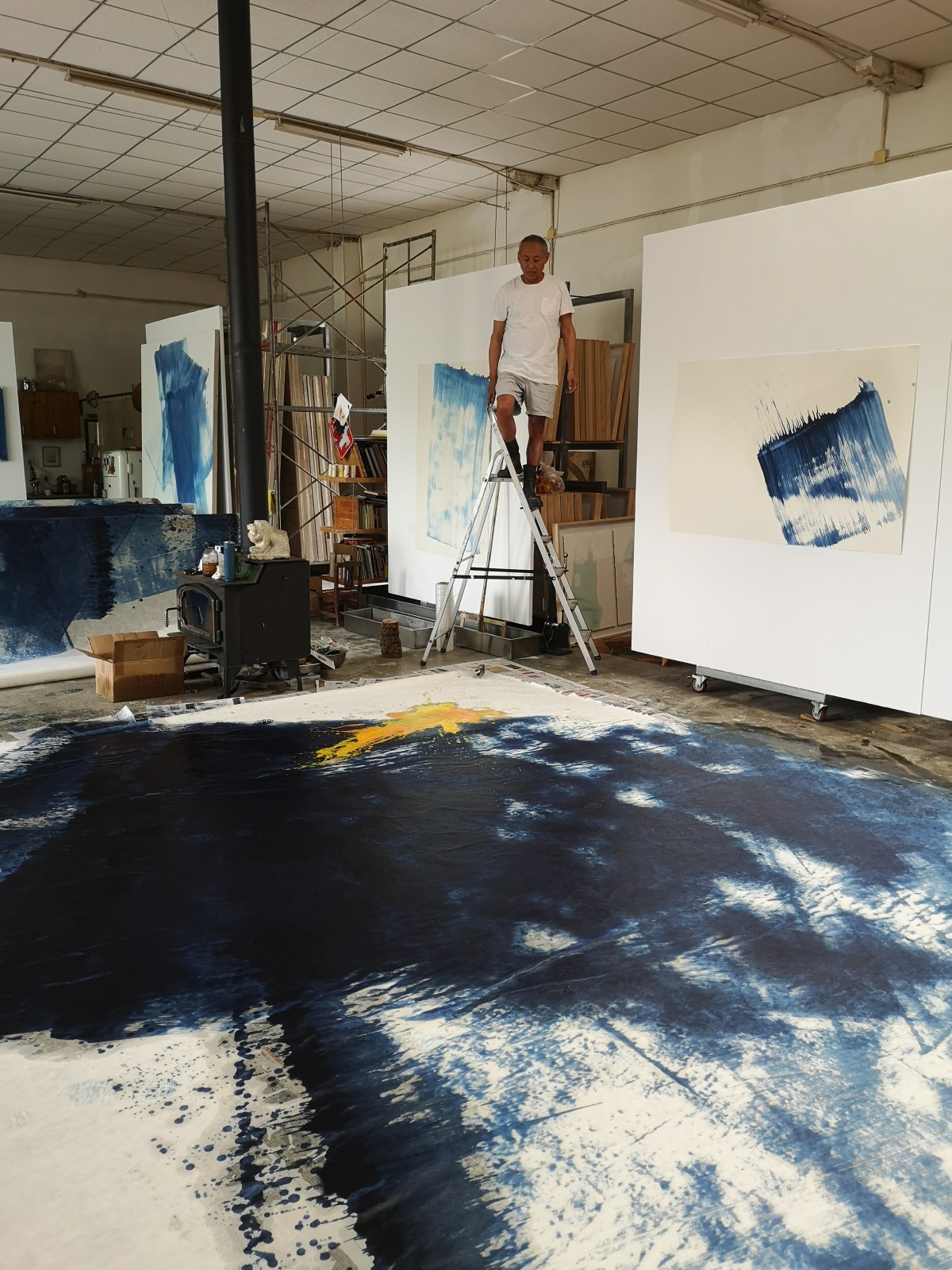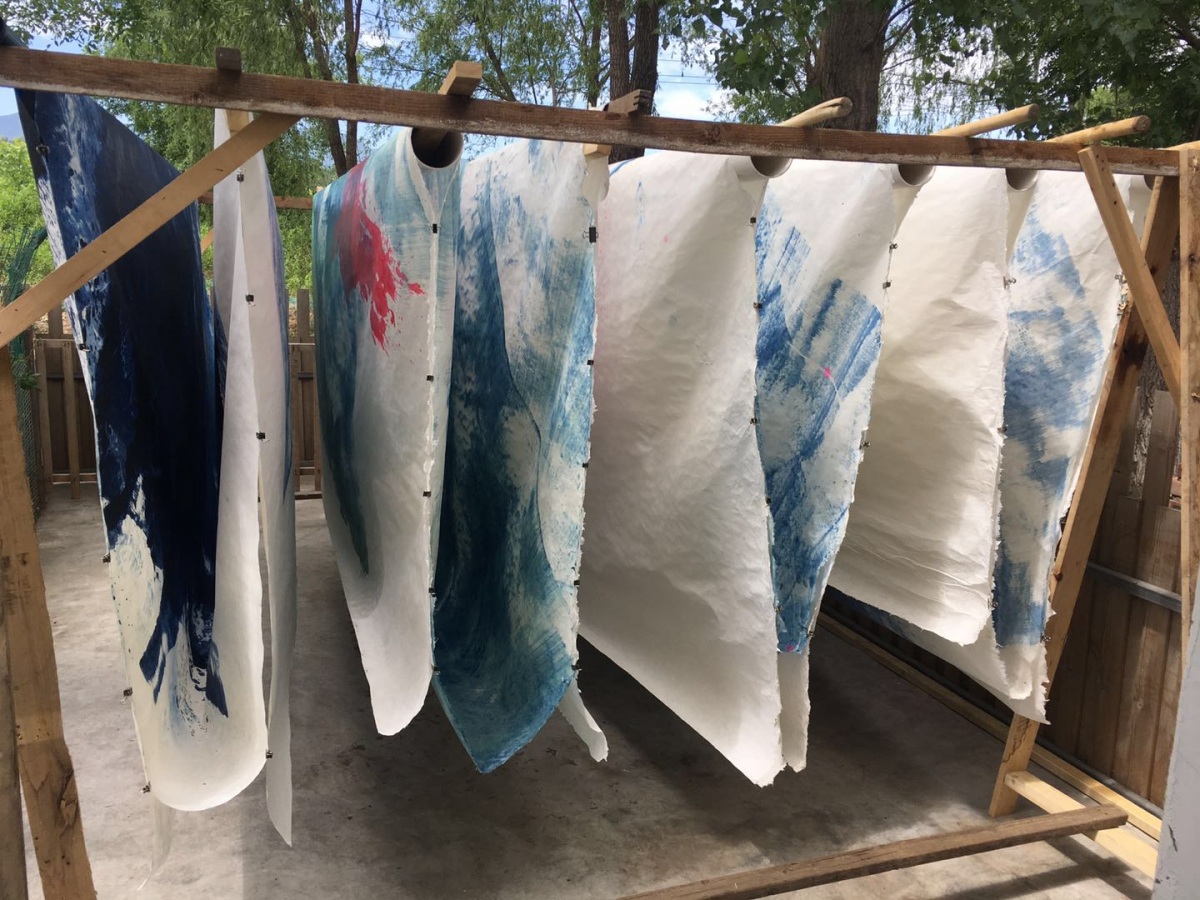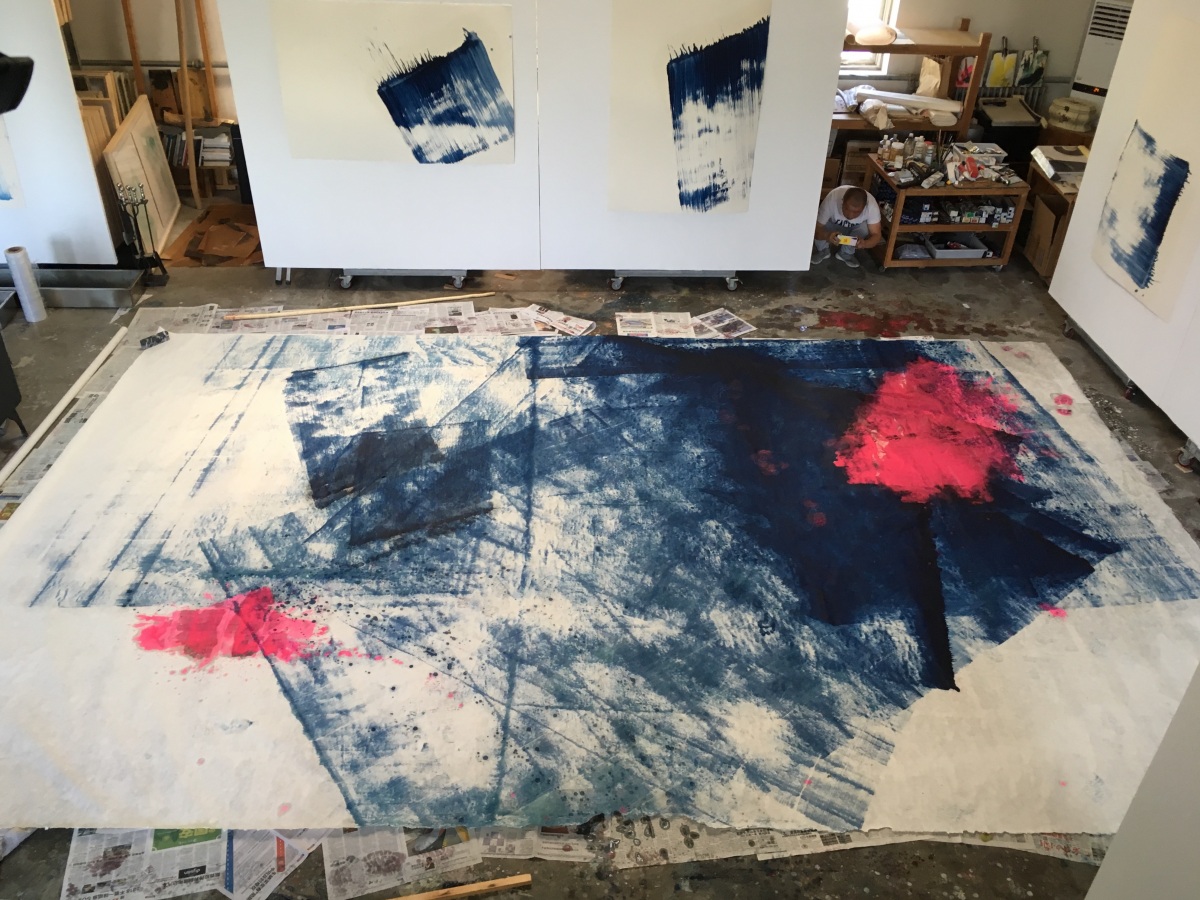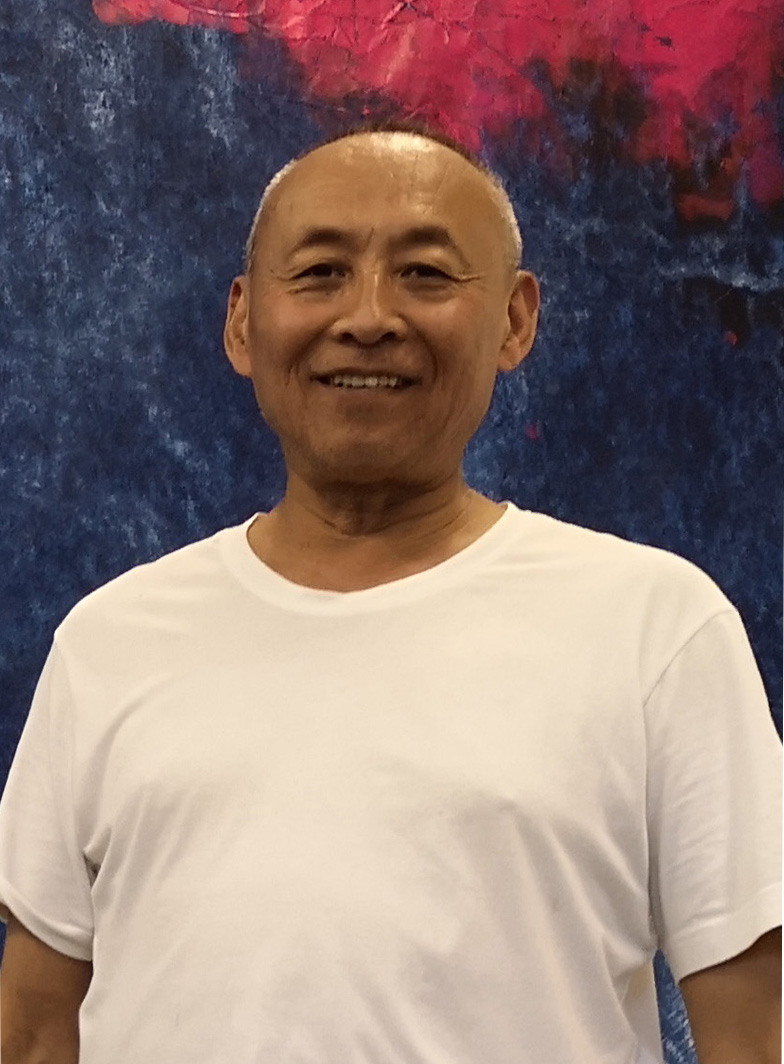Events
ZHANG WEI
OPENING 27 JULY 2019, 5PM
28 JULY – 31 AUGUST 2019, DAILY 4 TO 7PM
Specifically for the exhibition hall in Weidingen, the Beijing painter Zhang Wei has created a special work: a four-by-six-metre abstract painting on a huge sheet of handmade Xuan paper. The sheet will be hung in the middle of the room to be viewed from both sides, drenched by the changing light flooding through the skylights – a thin and fragile skin, soaked with light and colour, in a precarious balance between material and image, immanence and surface.
The idea came to the artist when he visited the exhibition space and was fascinated by the light conditions and the open glass wall that connects the interior of the venue with the surrounding nature. Zhang Wei started working on paper with his earliest oil paintings, landscapes that he painted during the 1970s in the parks around Beijing. Ever since, he has returned to this medium – the medium of calligraphy and traditional ink painting.
While in the traditional Chinese art of papermaking such huge sheets were used for landscape painting and calligraphy, it was not easy for the artist to find a manufacturer today. There is only one producer left, in Jingxian in the Anhui province, 750 miles south of Beijing, where Xuan paper is still manufactured in the traditional manner as part of a cultural heritage programme. Only once a year, in April, a small amount is made in a process that requires over a hundred stages with up to 60 workers, producing the sheets from the bark of the paper mulberry, or Chu tree, that is bleached in the sun.
Back in his Beijing studio, Zhang Wei spread the sheets on the floor and applied the paint with the help of squeegees made from 23 flat brushes while placing accents with an oil-drenched cloth. Xuan paper is an exceptionally fragile material that does not allow for corrections, and so the artist needs a mixture of anticipatory contemplation and spontaneous reaction to arrive at a composition. The paint fully engages with the texture of the material and the work is completely abstract – and yet for Zhang Wei colour always has something to say: “What I paint seems to be something that expresses itself as nothing, not conveying any meaning,” he explains. “But, in fact, human life is basically the same. The true meaning lies in the value of life itself.”
“Zhang Wei’s paintings are joyful. They are not a deliberate pursuit of flatness, yet he counters the so-called profoundness and spirituality of the traditional values with what appears to be an external view. So his relationship with Chinese traditions is not the defining point. It’s an open concept… The abstract language of Zhang Wei’s art is informed by his Eastern roots and Western expressiveness; the contradictions that emerge from this encounter are his special characteristics. The power of his work is born out of these conflicts; this energy is not harmony and must not be harmonious, since harmony will not have power. Zhang Wei’s paintings exist in a state of opposition. This is his singularity.” —Wang Luyan
